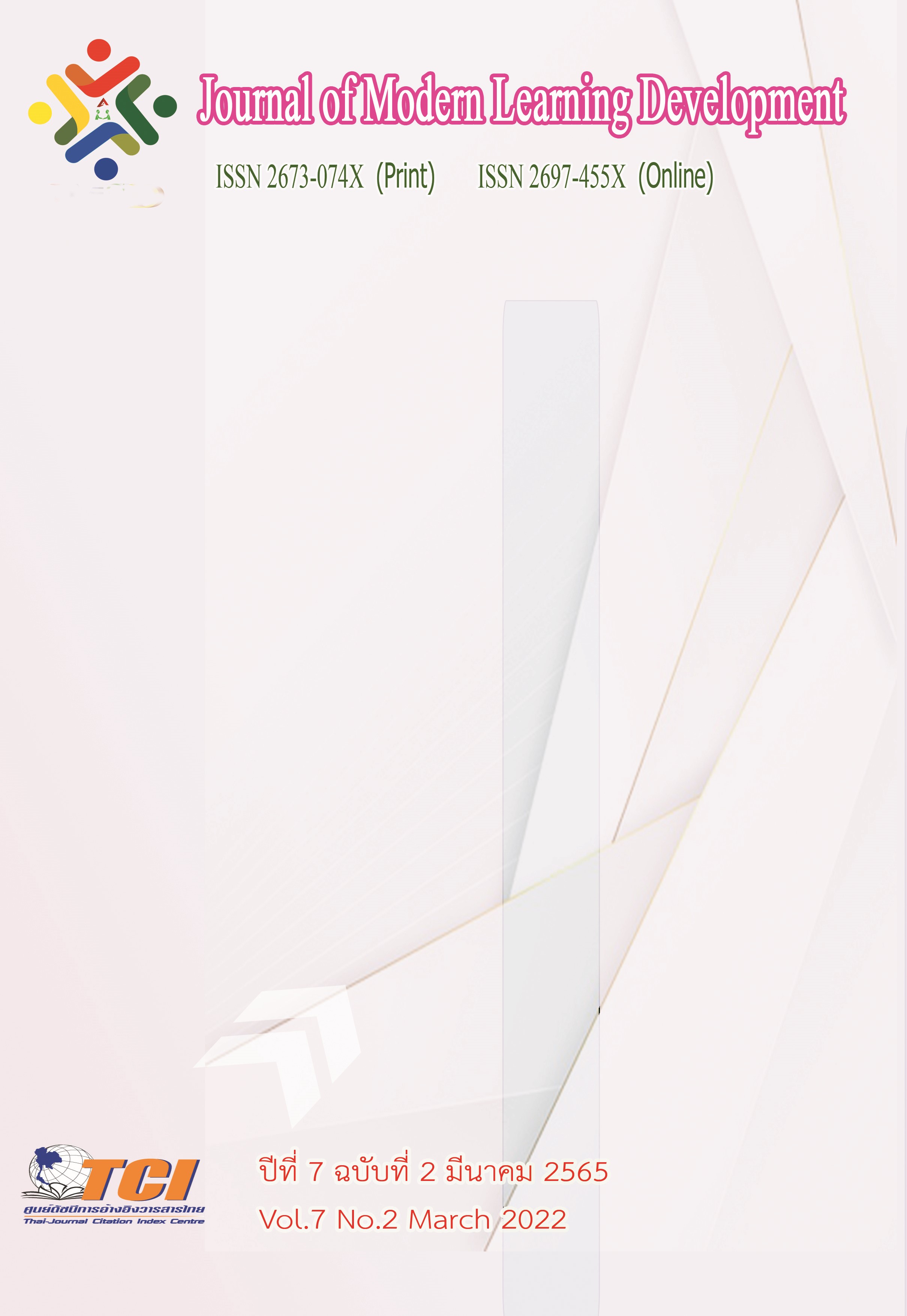Factors Marketing Mix that Affecting Consumer Decision Behaviour to Use Food Delivery in Samut Sakhon Province
Main Article Content
Abstract
The objectives of this research were to study 1) compare service decision behaviour of food delivery, classified by personal factors, and 2) factors marketing mix effects on service decision behaviour of food delivery. The research employs quantitative method by using a close-ended questionnaire for survey research. Data were collected from 400 persons who used food delivery within Samut Sakhon province under the concepted of (Cochran et al., 1953 : 690) by non-probability sampling and purposive sampling. Alpha Cronbach's confidence coefficient was .937. The research was conceptualized to analyze the percentage, mean, standard deviation, t-test, One-way ANOVA and Pearson’s correlation by using a statistic software
The research finding revealed that 1) Personal factors different by education have an influenced service decision different of Food Delivery at the statistically significant level of .05, while sex, age, occupation, and income are different, there were no difference in service decision behaviour of food delivery within Samut Sakhon province, and 2) overall factors marketing; product, price, place, promotion, people, process, and physical evidence have an effects on service decision behaviour of food delivery within Samut Sakhon province at the statistically significant level of .01 (R2=.659**, .684**, .630**, .668**, .645**, .619**, .826**)
Article Details
References
การเงินธนาคาร. (2564). Food Delivery เดินหน้าขยายตลาดพร้อมบริการที่หลากหลาย. ออนไลน์. สืบค้นเมื่อ 10 พฤษจิกายน 2564. แหล่งที่มา: https://www.moneyandbanking.co.th/article/news /food-delivery-sevice-new-normal-031164.
กรุงเทพธุรกิจ. (2564). ปรับทัพธุรกิจ สู่ Food delivery. ออนไลน์. สืบค้นเมื่อ 25 เมษายน 2564. แหล่งที่มา: https://www.bangkokbiznews.com/blog/detail/652109.
พิมพุมผกา บุญธนาพีรัชต์. (2560). ปัจจัยส่วนประสมทางการตลาดที่มีผลต่อการตัดสินใจใช้บริการ Food Delivery ในเขตกรุงเทพมหานคร และปริมณฑล. การค้นคว้าอิสระพาณิชยศาสตร์และการบัญชี. บัณฑิตวิทยาลัย: มหาวิทยาลัยธรรมศาสตร์.
วรามาศ เพ็ชรเนียม. (2558). ปัจจัยที่มีอิทธิพลต่อการเลือกใช้บริการในร้านกาแฟพรีเมี่ยมของประชากรในเขตกรุงเทพมหานคร. การค้นคว้าอิสระบริหารธุรกิจมหาบัณฑิต (พาณิชยศาสตร์และการบัญชี). บัณฑิตวิทยาลัย: มหาวิทยาลัยธรรมศาสตร์.
ศูนย์อัจฉริยะเพื่ออุตสาหกรรมอาหาร. (2561). ธุรกิจอาหารเดลิเวอรี่ในประเทศไทย. ออนไลน์. สืบค้นเมื่อ 15
เมษายน 2564. แหล่งที่มา: http://fic.nfi.or.th/MarketOverviewDomesticDetail.php?.
สุจิตรา ใจเอื้อ. (2562). ปัจจัยส่วนประสมทางการตลาด ที่ส่งผลต่อการตัดสินใจใช้บริการ Application Foodpanda ของผู้บริโภคในเขตกรุงเทพมหานคร. การค้นคว้าอิสระบริหารธุรกิจมหาบัณฑิต. บัณฑิตวิทยาลัย: มหาวิทยาลัยกรุงเทพ.
สุดที่รัก นุชนาถ. (2562). ความพึงพอใจและความภักดีในฐานะตัวแปรคั่นกลางที่เชื่อมโยงระหว่างส่วนประสมทางการตลาดสู่การตั้งใจใช้บริการแอพพลิเคชั่น GrabFood ของผู้ใช้บริการในเขตฝั่งธนบุรี กรุงเทพมหานคร. วิทยานิพนธ์บริหารธุรกิจมหาบัณฑิต. บัณฑิตวิทยาลัย: มหาวิทยาลัยเอเชียอาคเนย์.
สำนักงานกองทุนสนับสนุนการสร้างเสริมสุขภาพ. (2564). ตามติดพฤติกรรมกินอยู่อย่างไทย ออนไลน์. สืบค้นเมื่อ 30 เมษายน 2564. แหล่งที่มา: https://www.hiso.or.th/thaihealthstat/report/img/thaiheal thwatch/thw_2021_12.pdf.
อิศราวุธ งามเกษม. (2562). ปัจจัยส่วนประสมทางการตลาดที่มีผลต่อการตัดสินใจใช้บริการสั่งอาหารออนไลน์ เดลิเวอรี่. การค้นคว้าอิสระบริหารธุรกิจมหาบัณฑิต (สาขาวิชาการจัดการ). บัณฑิตวิทยาลัย: มหาวิทยาลัยรามคำแหง.
Benesty, J., Chen, J., Huang, Y., & Cohen, I. (2009). Pearson correlation coefficient. In Noise reduction in speech processing (pp. 1-4). Springer, Berlin, Heidelberg.
Best, J. W. (1977). Research in Education. (3rd ed). New Jersey: Prentice-hall Inc.
Cochran, W. G., Mosteller, F., & Tukey, J. W. (1953). Statistical problems of the Kinsey report. Journal of the American Statistical Association, 48(264), 673-716.
Likert, R. (1932). A technique for the measurement of attitudes. Archives of psychology. 22(140), 1-55.


